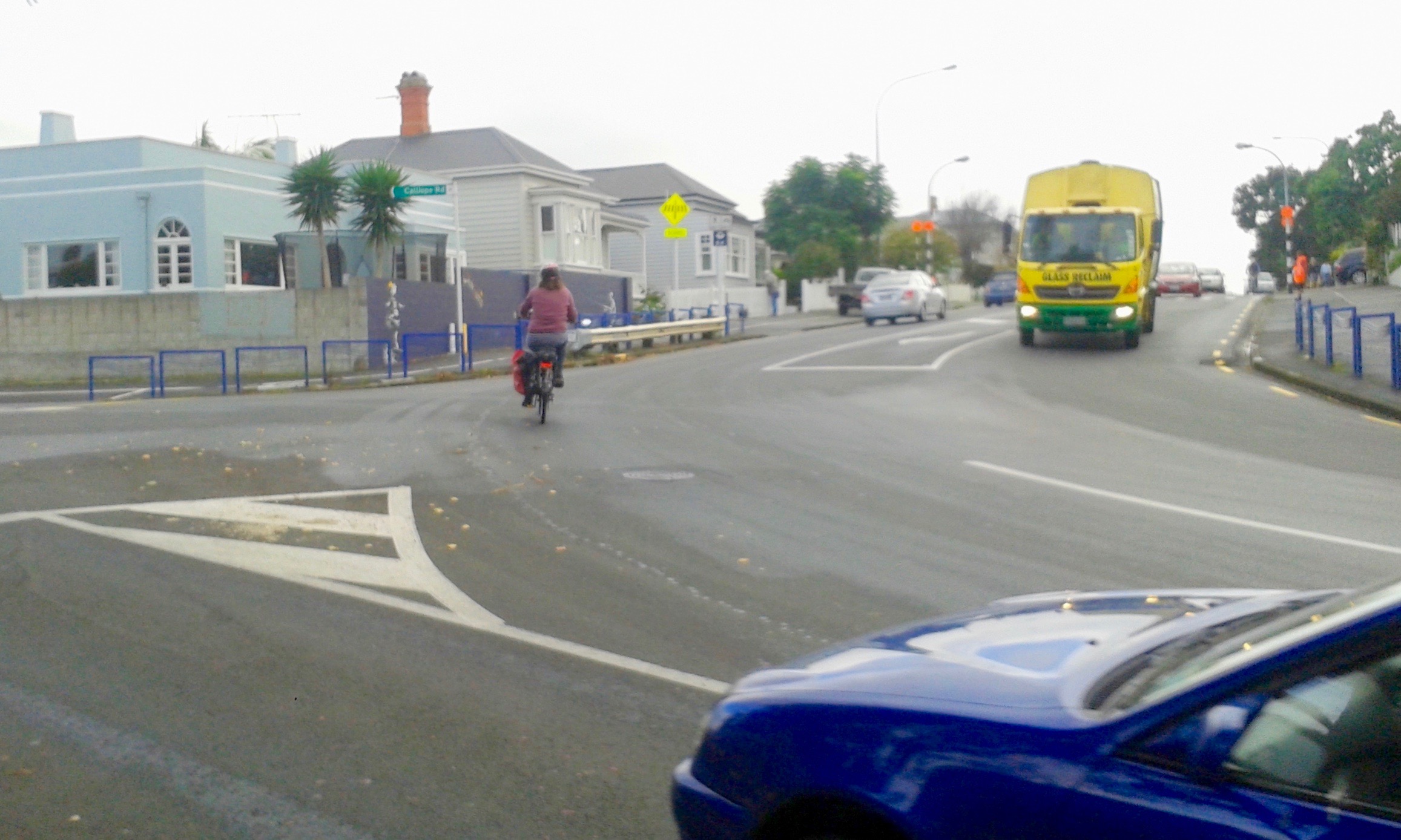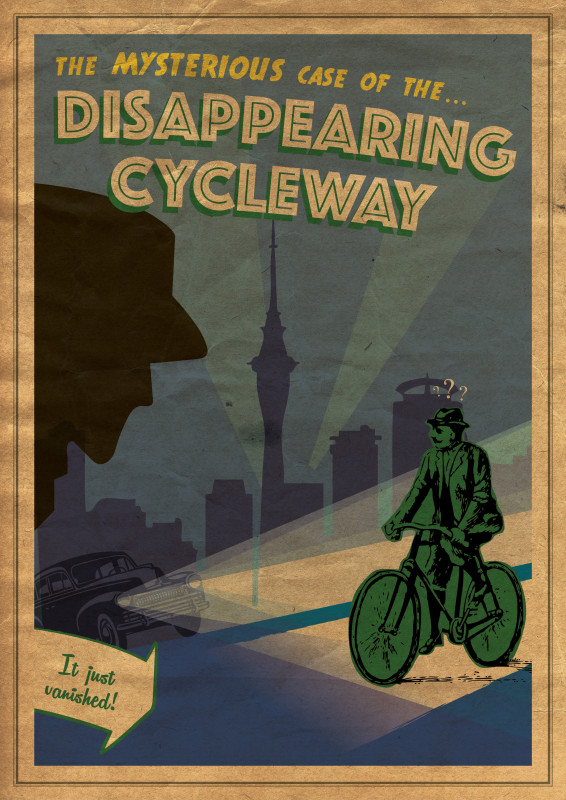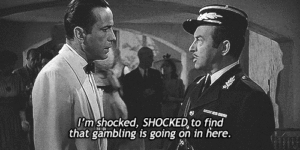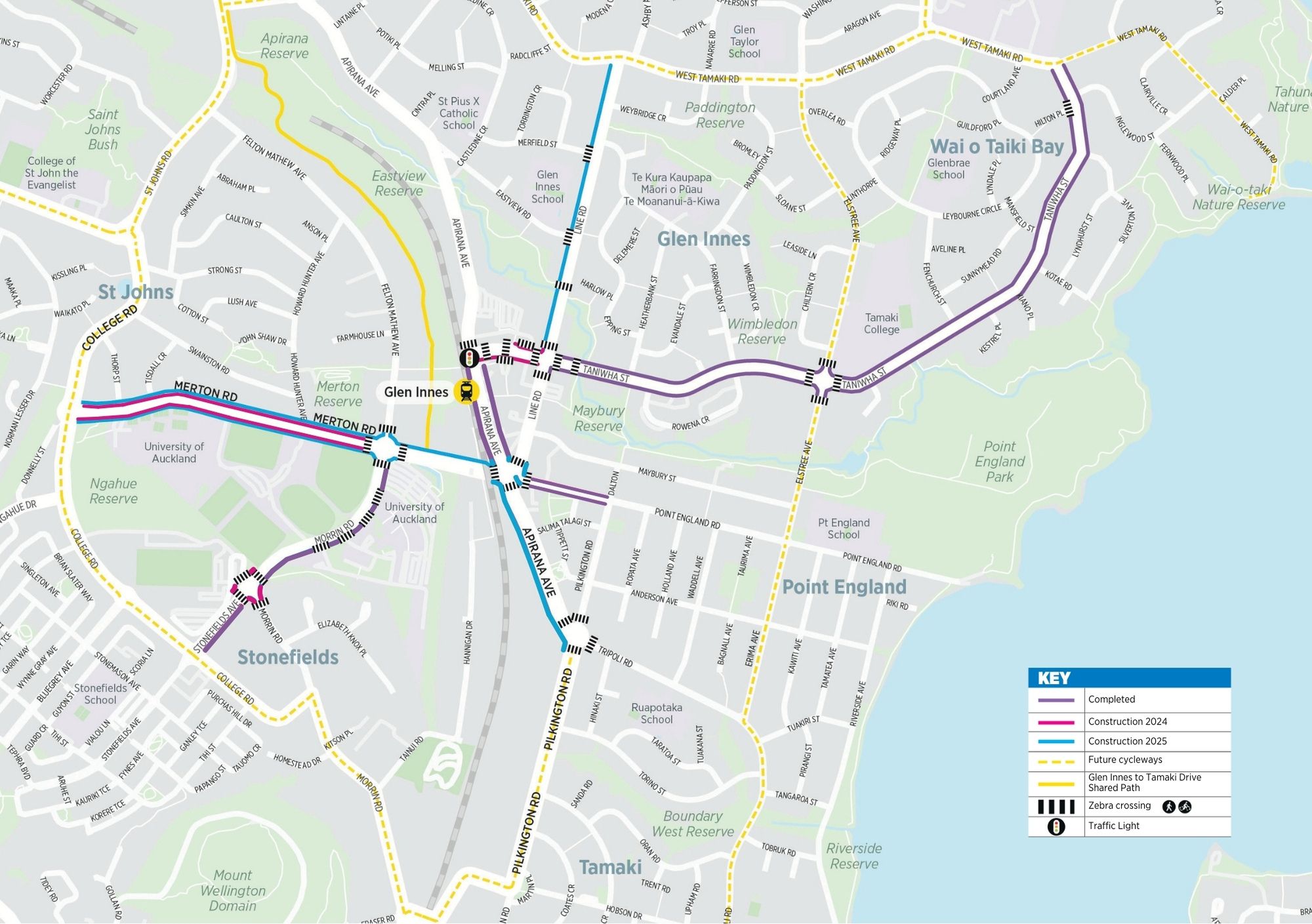Just in time for Halloween, we have a dark and terrifying tale for you. Remember Victoria St and Calliope Road? This Devonport intersection is an often busy and rather tricky one, with a sharp bend, a downhill, and a pedestrian crossing to a school. In 2014, Auckland Transport was tasked with making the dangerous situation safer for everyone and for people on bikes in particular.
After considering a roundabout, in May 2017 AT came up with a design featuring raised bike/walk crossings and dedicated bike lanes. Amazing progress! Sure, there were some pro forma grumbles from the Local Board about the cost, but something urgently needs to be done at this intersection (three years and counting) and as we asked at the time: What price safety?
Then, just as it seemed a solution was at hand – something alarming happened.
Gentle reader, steel yourself. Those of extremely delicate constitutions may wish to look away, or at least move your coffee cups away from your keyboards.
In the last few weeks, Auckland Transport seems to have decided the safest thing to do is…
…to do away with the bike lanes altogether!
Wait, WHAT? Or: how did we get here?
In August 2014 and September 2015, Bike Auckland submitted on the original roundabout design – generally a thumbs up, with several recommendations for improvement. (That design was shelved in 2016 because the project exceeded the $300k threshold for NZTA funding.)
In May 2017, AT came up with a modified T-intersection design. Again, we were generally in favour – something needs to be done! – and recommended a number of enhancements to make it better for people on bikes.
In October 2017 we became aware that AT had commissioned a Road Safety Audit (RSA) of their design… and that in order to address aspects of the audit, AT proposed getting rid of the cycle lanes.
But WHY?
Patience, dear reader. Here’s AT’s logic for removing the bike lanes from the design:
- The Road Safety Audit identified a ‘Moderate’ level concern around the lack of queueing space for cars turning into Calliope Road, which could potentially lead to a collision, as illustrated below.
- So, wouldn’t you just move the crossing slightly to the west, so a single car could wait without intruding on the crossing or the cycle lane? Smart thinking: we’d suggested as such in our May submission, and that’s also exactly what the RSA suggested as a solution here.
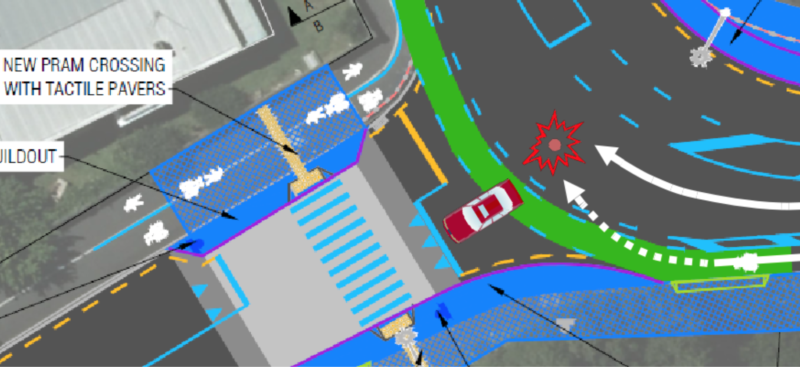
- But alas! AT claims this is too hard, because of a driveway on the southern side near the crossing. They claim they can’t move the crossing too far west, or it would be ignored by pedestrians. (Note: the RSA suggested re-aligning/ re-locating the driveway further westward, away from the crossing, if needed).
- AT also claims they can’t just widen the cycle lane or move it a little eastward because heavy vehicles might intrude on it as they sweep round the corner. (Again, the RSA was all over this one as well: it noted that the very large vehicles these tracking curves were designed for are rare on this route, which is why it rated this potential safety issue as ‘minor’.)
- Therefore, AT proposes removing the northbound bike lane…
- … and, for ‘consistency’, they propose to also remove the southbound bike lane.
And that’s how we end up with a design with no bike lanes. Because, consistency.
But… but… that’s not OK – is it?
It’s really, really not OK. But AT says it’s acceptable, because:
- This is an ‘intersection improvement project’, not a cycling project.
- An extra ramped crossing further down Victoria Rd will slow vehicles down, so it’s fine for cars and bikes to share the road here.
- And anyway, in a few years, a grand plan for cycling in the Devonport area may well see Copenhagen lanes and a proper traffic-calmed environment for Devonport Village. All things come to those who wait!
Bike Auckland rejects this reasoning on both technical and strategic grounds.
The technical case for keeping the bike lanes
Firstly, adding an additional ramped crossing further down Victoria Rd will not promote a sufficiently traffic-calmed environment to enhance cyclist safety at this intersection, and will do nothing to encourage new cyclists to give it a try.
Secondly, going back to the Road Safety Audit: RSAs breaks issues down into four classifications: Serious, Significant, Medium and Minor. Serious and Significant issues generally receive remedial action, Medium and Minor less often so, and generally the changes are much smaller. In fact, we know of a number of RSAs where medium and minor issues received no remedial action at all, as they were either deemed low risk, too expensive to remediate, or the remediation introduced a greater safety issue than the issue it was attempting to fix.
The Victoria/Calliope RSA didn’t identify any Serious or Significant isses. It identified four Moderate concerns and 14 Minor concerns – and the Road Safety Audit did not mention removing the bike lanes as a possible remedial action for any of the issues raised.
We think it’s extremely bad practice to trade off a ‘moderate’ safety issue – one which is not even ‘resolved’ by the proposed cycle lane removal, just hidden – in exchange for such a negative outcome for a specific user group. In fact, we doubt that the safety implications of removing the bike lanes were themselves safety-audited.
AT’s attempt to use the RSA as justification for cycle lane removal is therefore fatally flawed. The presence of the cycle lanes will greatly improve safety and amenity for cyclists at this intersection – and their removal from the design will introduce/retain a much greater safety issue.
We say AT can engineer its way through this. They should employ a skilled consultant to review the design, and refine it along the lines suggested in the RSA while keeping the bike lanes. Even subtle dimension changes to allow a little more space for a stacked vehicle will further reduce the already low risk of collision.
The strategic case for keeping the bike lanes
As Auckland’s Road Controlling Authority, AT has to consider the needs of all road users and all transport modes when upgrading the roading environment.
Lake Rd, with its Albert Rd/Victoria Rd extension to the Devonport Ferry Terminal, forms one of the most popular cycling routes in Auckland outside the CBD, with the Lake Rd cycle counter routinely recording hundreds of cycle movements daily. The route is part of AT’s Auckland Cycle Network, and is included in AT’s future plans to enhance cycling due to Devonport’s proximity to the city. Any changes to any aspect of this route must acknowledge the existing bike traffic and seek to enhance safety, both for existing cyclists and to encourage new ones.
It is inconceivable to us that, in 2017, AT would abandon plans for safe cycling infrastructure, let alone do so based on spurious arguments. It’s particularly appalling given the strong and growing mandate – at organisational, citywide, and national levels – towards more people biking in a safer environment:
- AT’s own Statement of Intent 2017/18 – 2019/20 says that AT will be more enthusiastic in promoting walking and cycling, and will double the number of cycling trips from 996,000 in 2015/16 to 2 million in 2018/19. AT’s own research shows that 60 per cent of Aucklanders would cycle if separated cycle facilities were installed. If AT fails to provide and improve biking facilities here, it will actively deter new cyclists – especially the broad demographic of ‘interested but concerned’ people who would love to cycle if only it feels safe to do so.
- Mayor Phil Goff clearly stated in his December 2016 ‘letter of expectation’ that he wants AT to be “maintaining momentum on delivering the cycling programme, incorporating priority for cycling and walking into projects, and building the case for a continuation of central government’s Urban Cycleways Fund beyond 2018.” Emphasis ours. This is clearly applicable to ‘intersection improvement projects’ like this one.
- The new Labour-NZF-Greens Government has also clearly stated that it expects a stronger focus on walking and cycling, both at the network level – including a commitment to SkyPath which will see more round trips on the Devonport route – and on the local level, specifically safe routes to school. Taking away proposed bike lanes here does nothing to help create a safe environment for school children.
And then there’s the optics
Lastly: whether AT intends or not, taking the bike lanes out of this design will be seen as the thin end of a political wedge. On the one hand, AT will be understood as willing to sacrifice cyclist safety in favour of greater motor vehicle speed. Meanwhile, given how vehemently the Lake Rd cycle lanes are opposed by a few members of the Devonport community, this will be seized upon as a willingness by AT to capitulate to those who are the noisiest about bike lanes, rather than those who need them most.
To sum up…
Once upon a time, we’d have been ‘shocked, shocked’ that AT was thinking of taking bike lanes out of a street design rather than engineer their way through any challenges. We’d have been appalled, but we wouldn’t have been surprised.
Now, we really are shocked – to see gambling (with people’s safety) going on here.
We utterly refute AT’s assertion that the safest solution here is to take away the bike lanes. It’s simply not justified on technical grounds, as minor remedial actions can address the issues. Nor is it acceptable or justified on strategic grounds, given that AT is bound and committed to promoting safety for people on bikes, so as to encourage more of them.
Accordingly, we’ve asked AT to reconsider this design direction and engineer their way through the challenges. We will share their reply with you as soon as we hear back.

